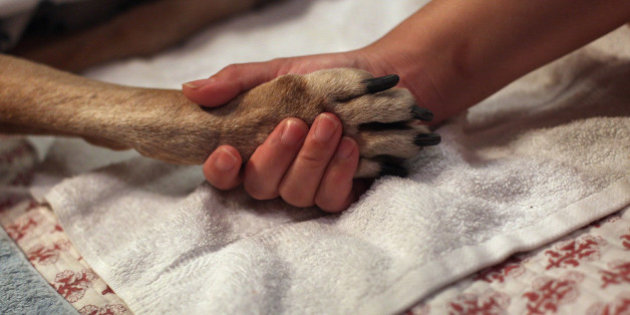
The Literal Animal: Lady’s View of Her Passing

The Literal Animal: Lady’s View of Her Passing
Lady was a beautiful blond Cocker Spaniel whose people called me for a consultation after she had passed. They wanted to know how she was doing, and how she experienced her transition through the death process. They supplied a photo, told me her age, breed and name, and I took it from there.
“How did you leave your body,” I asked Lady. With telepathic pictures she showed me that at the moment she left, the blood flow to the heart and brain was interrupted. She showed me that blood flow stopped short of travel to the heart and brain. Then, she exited the body. I translated these pictures to her humans, asking, “what did she die of?”
“Pancreatic cancer,” they told me.
Telepathic Picture Puzzle
The pictures didn’t match what I was seeing so I wanted to find out what Lady meant by her assessment. I queried them further.
“She shows me that the blood flow was interrupted to the heart and brain, and that doesn’t seem right for a death from pancreatitis,” I said, puzzled, and my assessment left them doubting that my communication was accurate.
But Lady’s people told me she was euthanized.
Asking the Right Questions
Lady was not asked about her physical ailments at the time of her death, only how she died. So she showed me her exact assessment of how she passed from the body.
Most veterinarians use a drug called pentobarbital to euthanize your animal friend. Typically, within five seconds after injection, the animal is unconscious and within 20 seconds breathing stops. The heart and circulation usually stop within a minute and by that time the brain, heart and lungs has also stopped functioning.
So Lady’s interpretation of what happened at the time of death was correct. Her circulatory system stopped functioning. She simply answered my question as she saw it: what happened at the exact time she left her body.
Animals are Literal
Animal are such literal creatures. They don’t generally show me a broad and sweeping scenario of the months of suffering they go through, the diagnosis given by a vet, or a lot of other details. They simply answer the questions we ask.
As humans, our communication is much more convoluted. We are emotional beings, and all of our experiences can be a part of the answers we give to a specific question. But animals are simply literal, straight forward and honest in their responses. Animals instruct us in the use of direct communication.
